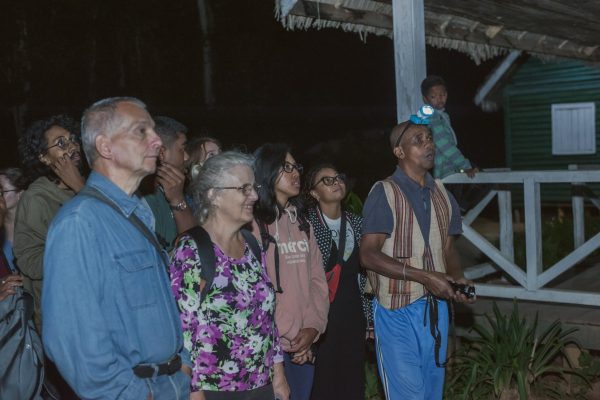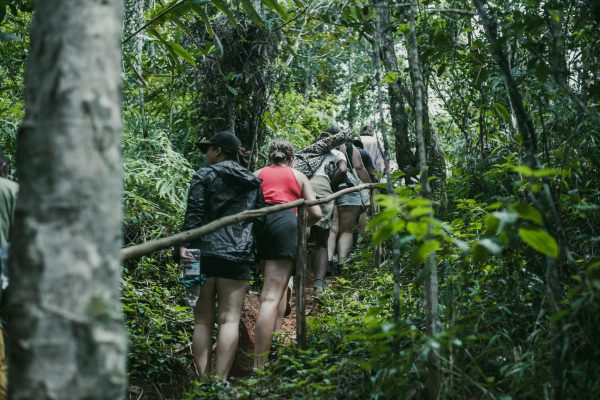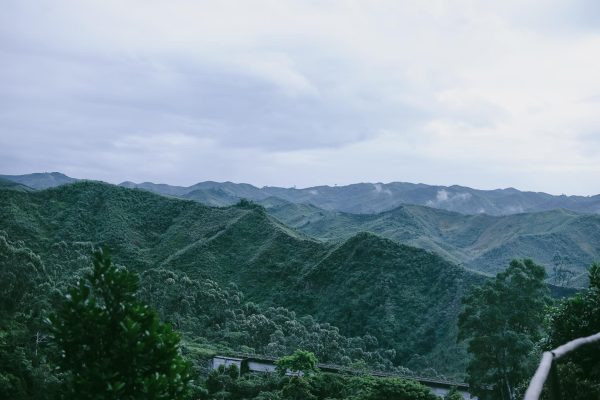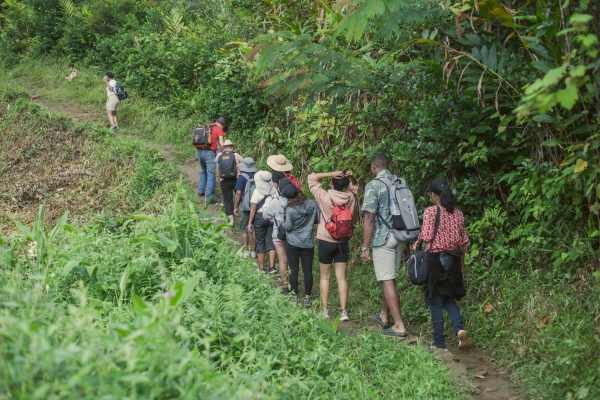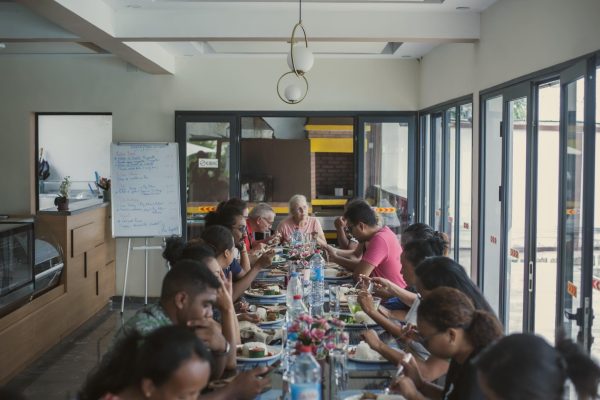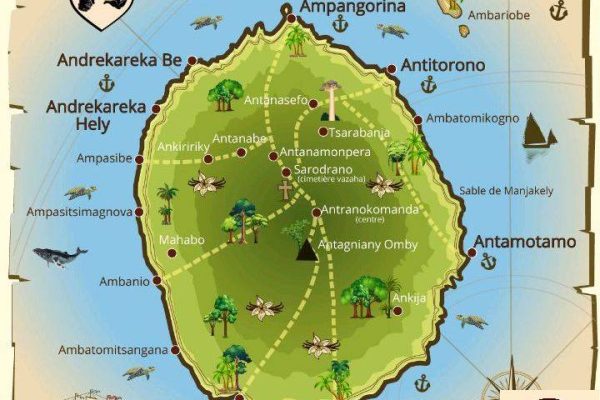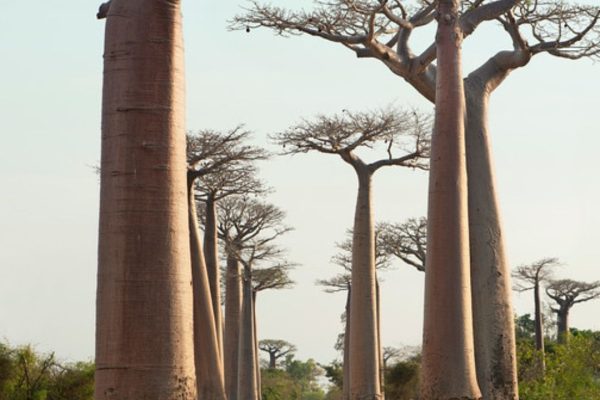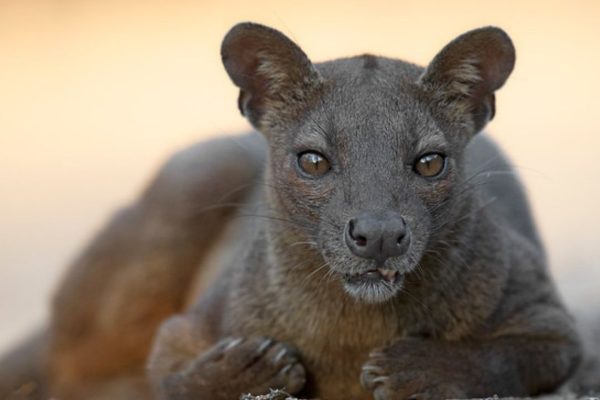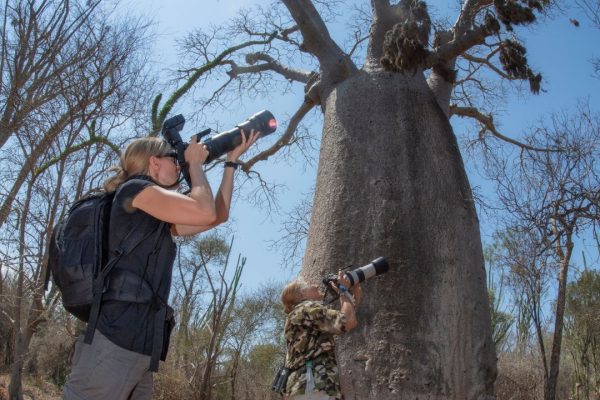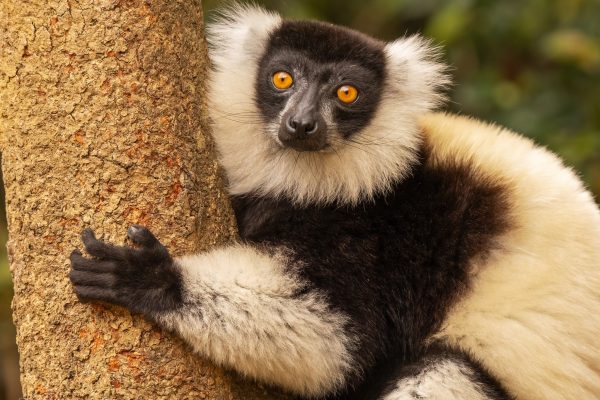DAY 8,
ANTANANARIVO – ANDASIBE – ANALAMAZOTRA – VAKONA
MORONDAVA – TSINGY- ISALO – TULEAR
HIGHLIGHTS:
- Visit the vibrant town of Antananarivo, the capital of Madagascar.
- Encounter unique wildlife, including the fossa, famous Indri Indri lemurs, chameleons, and more.
- Explore Madagascar’s renowned national parks and reserves like Andasibe, Isalo, Tsingy, and Analamazotra.
- Discover the majestic Avenue of the Baobabs.
- Immerse in the cultures of local ethnic groups at various destinations.
ITINERARY
Andasibe
After the long flight, the guide of and the driver will welcome you at the international airport of Antananarivo. We drive to the Andasibe National Park. The trip takes approximately 3 hours.
Overnight in Andasibe.
Andasibe – Analamazaotra – Vakona – Antananarivo
You will leave the hotel around 7:30 am and head to the entrance of the Analamazaotra Special Reserve to look for the largest lemur in Madagascar, the famous Indri Indri. This lemur is endemic to the area and has become its emblem.
Through an easy hike of about 2 to 3 hours, you will look for groups of Indri Indri, as well as other species of lemurs, birds, chameleons, endemic flora, and medicinal plants.
You will also visit the vast Vakona property, an island surrounded by fresh water that is home to several species of lemurs: common brown lemurs, bamboo lemurs, rufous lemurs, and diademed sifakas. This is a unique opportunity to get up close and personal with these primates.
The Vakona property offers incredible photo opportunities and souvenir shopping. Numerous crocodiles, which belonged to a former farm, can also be found in one of the small lakes on the property.
Next, we will visit Andasibe, a village with a population of approximately 5,000 inhabitants. On this visit, you will witness the daily life of this quiet and colorful village. With your guide, you will walk through the narrow cobblestone dirt streets, along with the small stalls.
Overnight in Antananarivo.
Andasibe National Park
The Andasibe Mantadia National Park was founded in 1989 and covers two areas totaling 154 km². Both parts belonged to the same wet forest and were divided due to human activity. The Indri Indri is the star of the national park.
Additionally, there are day-active species like Diadem Sifaka, Black and White Vari, and Grey Bamboo Lemur, as well as night-active species such as the small Mouse Lemur, Aye Aye, Fossa, Brown Maki, and Eastern Wool Lemur.
You will also encounter a variety of birds, reptiles, and amphibians. Andasibe is also a kingdom of orchids. Cymbidiellas falcigera and Bulbophyllum ameleni are among the most enigmatic species, contributing to the balance of the forest ecosystem. Three-quarters of the 1,200 plant species are found only in the Andasibe Mantadia National Park.
Antananarivo – Morondava – Bekopaka
Early in the morning, we will drive you to Ivato Airport where you will take your flight to Morondava. The flight duration is approximately 2 hours.
Upon your arrival, you will be driven to Bekopaka.
Overnight in Bekopaka.
Morondava
Located on the delta of the river of the same name, Morondava is the economic and administrative capital of the Menabe region, situated on the west coast of Madagascar.
An urban and renowned seaside resort, Morondava benefits from large stretches of white sand beaches. Also, about twenty kilometers away, you will find the famous and spectacular Avenue of the Baobabs, recognized worldwide and classified as a UNESCO World Heritage Site.
Visit of the Tsingy
At dawn, you will take a traditional dugout canoe to navigate the Manambolo River and admire the impressive gorges. Further up the river, you will see some caves and learn about the burial traditions of the Vazimba (the first inhabitants of Madagascar). You will start with this simple introduction to the Tsingy of Bemaraha. The short circuit traverses a labyrinth of limestone and is relatively easy to access via footbridges, iron ladders and small bridges. While the pinnacles are steep, they are not too high. You can observe them from two viewpoints, with good chances of spotting Decken’s sifakas and red-fronted brown lemurs.
Manambolo River
The Manambolo River rises in the Highlands and cascades down the Bongolava slopes to reach the Menabe plains. The descent of the river is most pleasant, following the current slowly, leaving time to appreciate the natural diversity of the region, the landscape of hills and rocks sculpted by erosion. Nestling on the shores are a number of small villages that give life to the river through fishing, stockbreeding and agriculture. You can make a few stops along the way and meet the friendly, atypical locals. The villagers will greet you with a smile and teach you about the simplicity of life. Far from civilization and all means of communication, you’ll understand that it really doesn’t take much to be happy. During the dry season, large sandbanks are formed. This is when you can admire different species of birds such as humpback ducks, plovers, herons, teals, great egrets and eagles, who come to enjoy the freshness of the water and the surrounding vegetation.
Tsingy – Morondava
After breakfast, you will board a 4×4 vehicle and drive to the entrance of the Tsingy de Bemaraha trail, about 17 km north of Bekopaka. Equipped with harnesses hooked to the steel cable, you will ascend and hike through the limestone forest. The Tsingy de Bemaraha Integral Natural Reserve represents rare or eminently remarkable geological phenomena of exceptional beauty. It features impressive geological elements, including karst landscapes with a highly dissected limestone massif that rises up to 100 meters, forming true cathedrals, offering a grandiose and spectacular natural landscape. After the hike, you will be transferred to Morondava. In the late afternoon, we will head to Baobab Alley.
Tsingy de Bemaraha
Around 200 million years ago, this unique landscape began to form. The limestone seabed was pushed upwards, creating a plateau which was hollowed out by heavy rains and over the years took on its current form of tall limestone pillars. The wilderness reserve consists mainly of canyons, gorges, intact forests, lakes and mangroves, all of which feature an astonishing variety of flora and fauna. The rate of endemic species is around 85%, 47% are even locally endemic animals. The western slopes of the massif rise more gently and are mainly covered with dry deciduous forests, perfectly adapted to extreme climatic conditions. Also in the north, the limestone profiles describe rather gentle hills, while in the south the extensive elevation formations extremely restrict access. Amidst this difficult-to-access vegetation lies the magnificent Manambolo Gorge, where you can see waterfalls, lemurs and magnificent untouched forests. The landscape here above the plateaus resembles a grassy savannah. In the deep gorges, however, the vegetation is very humid with small rainforests and many liana plants.
The Avenue or Alley of Baobabs
The Avenue or Alley of Baobabs is a prominent group of baobabs lining the dirt road between Morondava and Belo sur Tsiribihina, in the Menabe region of western Madagascar. Its breathtaking scenery attracts travelers from all over the world, making it one of the most visited places in the region. The baobabs, up to 800 years old, known locally as renala (Malagasy for “mother of the forest”), are a legacy of the dense tropical forests that once thrived in Madagascar. Originally, the trees did not stand alone in the arid scrub landscape, but rather were the only trees in the forest.
Morondava – Isalo
After breakfast, you will be driven to the airport to take your domestic flight into Tulear passing through Antananarivo. Once you arrive in Tulear, you will be driven to Isalo, Ranohira. Overnight at Isalo.
Visit Isalo National Park
After breakfast, you will visit Isalo National Park, to discover the queen of Isalo, the window of Isalo, the natural swimming pools, animals and other plant species etc… In the afternoon, you will return to the hotel. Overnight at a 4 star hotel.
Isalo
The Isalo National Park is a natural rocky massif, resembling a field of ruins with very atypical relief, reminiscent of the great American West — it is not for nothing that Isalo is nicknamed “The Malagasy Colorado”. Composed of rocks formed more than 150 million years ago, the park alternates between desert landscapes and green canyons within which flow many rivers taking their source in magnificent natural pools, which gives an absolutely magnificent visual result. In the Isalo National Park, there are also natural pools and perfect waterfalls.
Isalo – Tulear – Antananarivo – Departure International
After breakfast, we will depart for a transfer to Tulear (about 250 km) through the villages of the sapphire researchers of Ilakaka, the tropical forest of Zombitse, the semi-arid savannah dotted with baobabs, the shrubby bush where the funerary buildings of the Mahafaly tribe stand, decorated with colorful patterns, as far as Tulear, on the banks of the Mozambique Channel. You will take a flight to Antananarivo at 8:30 pm. Night in Antananarivo.
Toliara
Tulear, also called Toliara, is the capital of the southern region of Madagascar. This city, bathed by the sun all year round, offers a rich cultural life. It is located at the end of the RN7 and borders the Mozambique Channel. By its position on the Tropic of Capricorn, Tuléar benefits from a very pleasant climate and continuous sunshine almost all year long which justifies its nickname “the city of the sun”.
END OF OUR SERVICE
Inclusive:
- Hotel during the tour
- Transport during the tour
- Internet in the car during the tours
- Domestic flight ticket
- Bilingual English guide during the tour
- Welcome in English representative at the airport
- Welcome gifts
- Telephone assistance in English 24/7 at Ifanadiana, Madagascar during the trip
- 24-hour emergency service in English for family members during the tour
- Map of Madagascar
- Detailed tour information in English
Exclusive:
- International plane ticket
- Local guide in the parks
- Travel insurance
- Lunch & Dinner

